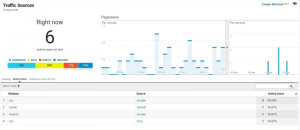by April Mullen, December 15, 2016
Building long-term customer relationships is a key path to profitability and return on marketing investment.
Brands struggle, however, to create meaningful journeys that are helpful to customers. There’s a compelling reason for you to prioritize this effort now, though. Forrester Research states that customer-experience leaders grow compound average revenue growth at 17%, vs. customer-experience laggards at 3%.
Work with a cross-functional team on this planning exercise, as your customer relationships are owned and managed across the organization. Invite people from your user experience team, customer service, analytics, marketing, research, store or branch teams to ensure that you take into account all the various ways your customer experiences your brand. You may want to set this up as a multi-day planning session and make sure to meet in a room with a whiteboard.
Here are six steps to map your customer journey:
1. Consider the most important high-level actions of your consumers. What are the major ways customers interact with your brand? For retail, it may be browse, buy, return, repurchase, and refer/advocate. During this part of planning, have your teams whiteboard and gain a consensus on the high-level actions. Understand each of those points fully through looking at studies, surveys, focus group findings, customer service call reasons, etc.
2. Plot your consumers’ course. Using the retail journey example above, let’s focus on the “buy” part of the journey. Let’s assume that through the insight shared by various teams, you know that your customer might be looking for a good deal, or wants to find a local store, needs confirmation that an item will ship quickly when purchased online, wants to see a confirmation of quality on a product, etc.
For this step, let’s focus on the customer who wants a good deal. What is the process she goes through? She may visit your Web site and sign up for email because a pop-up on the site promised a discount via email.
Whiteboard and focus on each way the customer can get a deal.
For now, we’ll use the email sign-up example to carry forward the steps.
3. Examine expectation vs. reality. Looking at the customer who signs up for email to get a coupon and make a purchase, seek to understand what your customer expects vs. what she experiences. You’ll need to lean on the empathy and the knowledge you have from the other groups represented in your planning session.
In this example, let’s say the customer comes to your site to get a deal on a sweater as a gift to her sister. She needs to make the purchase online today and place her order now, because shipping cutoffs are looming.
Looking at what happens, though, you start to understand that your coupon is sent 24 hours later, thus causing your customer to buy the sweater at a competitor, and possibly losing her as a customer in the future.
4. Analyze opportunity. Now that you understand what the expectation is vs. what is delivered, you can quickly shape up what the opportunity is. In this example, you might take recent browse behaviors of this customer to personalize a welcome email with sweaters she has looked at, which you’ll trigger n real time to capitalize on her desire to buy something now. Or maybe you’ll offer options to get the coupon across other channels? This is where you start to get specific on a particular journey and create high-level requirements for automation.
5. Assess feasibility. Your opportunity step may represent your dream scenario, but you need to outline what is actually possible. This step is where you ask critical questions and let reality set in. Can you set up an API to trigger the email in real time? Do you have browse behaviors available to populate the email?
Reshape your journey from step 4 to outline a realistic journey you could do more quickly. You can always go back and use your dream scenario later when you have the capabilities.
6. Plot order of opportunities. Now that you’ve gotten real on feasibility, it’s time to plot priorities. At this point, I’m assuming you’ve gone through this exercise across the journey and have several programs outlined. You’ll want to create a quadrant with “Level of Effort” on the X-axis going from left to right. You’ll want “Return on Investment” or “Business Impact” on the y-axis going from bottom to top. This will leave the most desirable programs on the top left and the less prioritized items on the bottom right.
Email is certainly a critical piece of this very important exercise, but this needs to be thought of as much bigger than a single channel strategy. This is shaping how your customer experiences your brand across all touch points, online and offline.
Have you mapped a customer journey? If so, I’d love to hear how you did it in the comments.
MediaPost.com: Search Marketing Daily
(72)
Report Post





